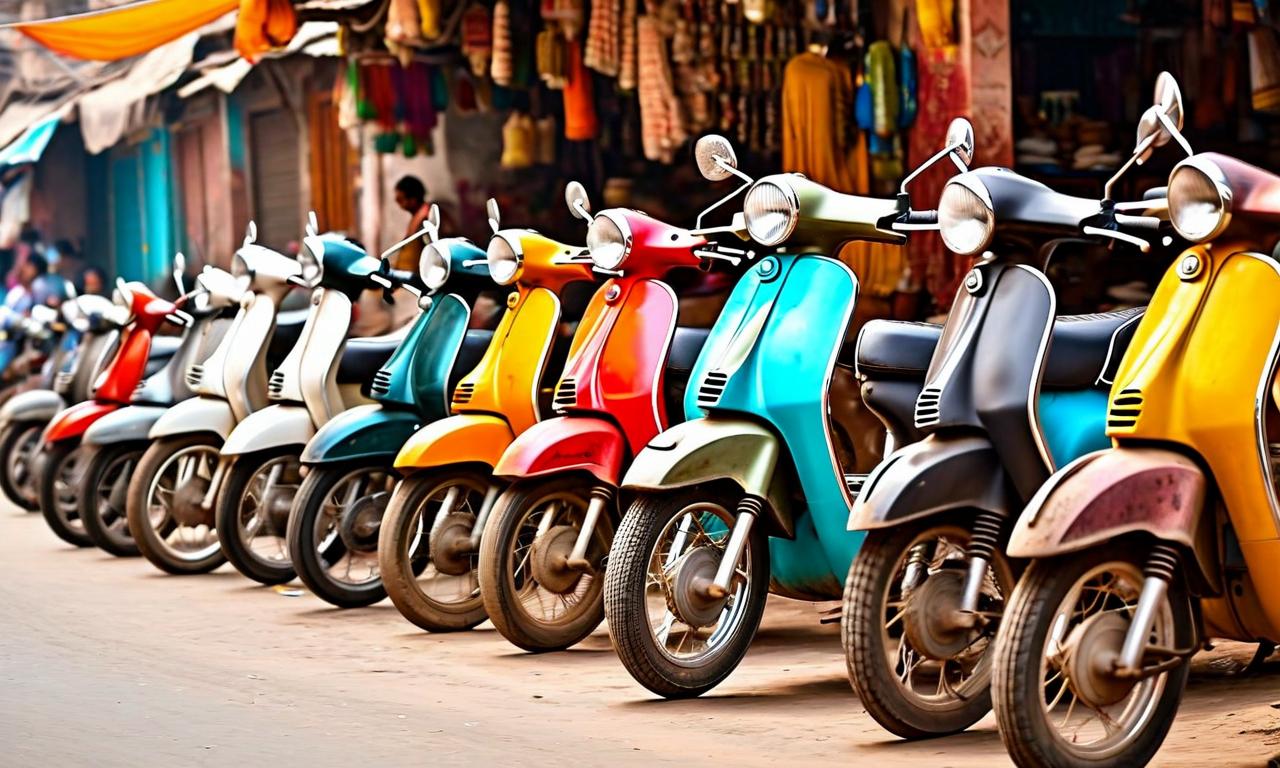GST Rate Cut on Two-Wheelers Set to Boost Affordability and EMIs
The GST Council has reduced tax rates for motorcycles and scooters with engines up to 350cc from 28% to 18%, effective September 22. This cut benefits 98% of the two-wheeler market, making vehicles more affordable. For example, a bike previously priced at Rs 2 lakh (on-road) will now cost approximately Rs 1.84 lakh. The move is expected to stimulate demand in the two-wheeler sector, particularly benefiting young buyers, professionals, lower middle-class households, and rural populations. Motorcycles above 350cc will be taxed at 40% without cess, primarily affecting premium brands.

*this image is generated using AI for illustrative purposes only.
In a significant move that promises to revitalize the two-wheeler market, the GST Council has announced a reduction in tax rates for motorcycles and scooters, effective September 22. This decision is expected to have far-reaching implications for both consumers and the industry at large.
Key Points of the GST Rate Cut
- Bikes with engines up to 350cc will now attract 18% GST, down from the previous 28%.
- This reduction benefits nearly 98% of the two-wheeler market.
- Motorcycles above 350cc will be taxed at 40% without cess, primarily affecting premium brands like Royal Enfield.
Impact on Pricing and EMIs
The GST rate cut translates directly into more affordable two-wheelers and reduced loan EMIs for consumers. Here's how:
- For a bike previously priced at Rs 2 lakh (on-road), the new GST rate reduces the price to approximately Rs 1.84 lakh.
- This price reduction results in a lower monthly EMI, with an estimated decrease of Rs 465 for a 36-month loan at 12% interest.
Current Two-Wheeler Loan Rates
Major banks are offering competitive interest rates on two-wheeler loans:
| Bank | Interest Rate (Starting From) |
|---|---|
| HDFC Bank | 14.50% |
| ICICI Bank | 10.25% |
| Axis Bank | 10.50% |
| SBI | 13.10% - 14.60% |
Beneficiaries of the GST Cut
The reduced GST rate is expected to make two-wheelers more accessible to a wider range of consumers:
- Young buyers entering the job market
- Professionals looking for affordable commute options
- Lower middle-class households
- Rural and semi-urban populations, including:
- Farmers
- Small traders
- Gig workers
Industry Implications
This move by the GST Council is likely to stimulate demand in the two-wheeler sector, which has been facing challenges in recent times. The increased affordability could lead to higher sales volumes, particularly in the sub-350cc segment that dominates the Indian market.
For premium motorcycle manufacturers with models above 350cc, the impact may be mixed. While they face a higher tax rate of 40%, the removal of cess could potentially offset some of the increase.
As the new tax rates take effect, industry observers will be keenly watching for shifts in consumer preferences and any potential boost to the overall automotive sector. The coming months will reveal the full extent of this policy change on both the industry landscape and consumer behavior in the two-wheeler market.





























